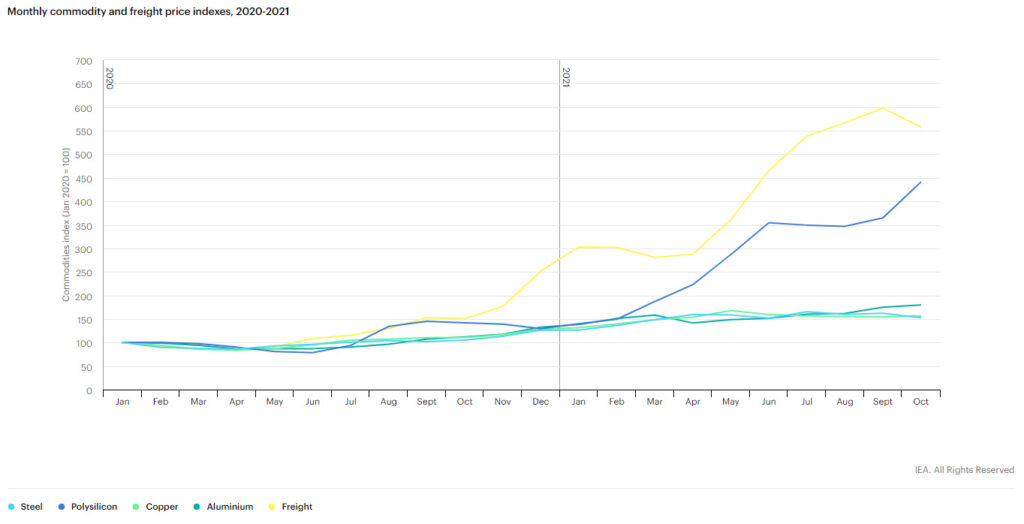CM Solar
Impact of rising commodity and energy prices on solar PV

What is the impact of increasing commodity and energy prices on solar PV, wind and biofuels?
Rising commodity prices have increased the cost of producing solar PV modules, wind turbines and biofuels worldwide. This situation has short-term implications for equipment manufacturers, project developers and policy makers. Higher prices for solar PV and wind equipment have reversed the cost reduction trend that the industry has seen for more than a decade and may delay the financing of some projects already in the pipeline. While rising input prices have already resulted in policy change on biofuels in several countries, demand for wind and solar PV remains strong, as reflected in recent auction participation and corporate purchasing, even with rising prices. While uncertainty remains as to how long commodity prices will continue their upswing, the impact of rising material costs on the profitability of the renewable energy industry could have long-term implications for the cost of clean energy transitions.
Prices for many industrial materials, and freight costs, have been on an increasing trajectory since Q1 2021, pushing up wind turbine and solar PV costs. Since the beginning of 2020 the price of PV-grade polysilicon has more than quadrupled, steel has increased by 50%, copper by 60% and aluminium by 80%. In addition, freight fees have increased almost sixfold, resulting in additional costs for the geographically dispersed supply chain of renewables. The reversal of the long-term trend of decreasing costs is already visible in the prices of wind turbines and PV modules, which have increased by 10-25% depending on country and region, erasing two to three years of cost reductions since 2018 from technology improvements.
